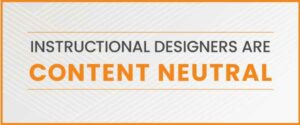Learn how to stand out in your instructional design-related career using talent stacking.
Stealing From Product Design
Seven Principles for Innovating
For inspiration and innovation, here are seven strategies from product design that you can use for learning design.
Are Your Online Tests Valid?
How to Improve Test Validity
To improve the test validity of the assessments you develop, be sure you are measuring what you think you’re measuring.
How to Write Instructional Design Case Studies for Your Portfolio
Adding instructional design case studies to your portfolio adds depth and insight to your work. It supplements the skills you want to demonstrate.
How To Be More Creative At Work
For Learning Experience Designers
Being creative on demand can be difficult. See these strategies for how to be more creative at work.
How to Build an Instructional Design Portfolio
Here is a seven-step process anyone can follow for building an instructional design portfolio from start to finish.
Using Thumbnail Sketches In eLearning Design
Thumbnail sketches are quick, rough sketches that let you play with multiple ideas. They have many uses in elearning design.
Creativity In Instructional Design
A Creative Instructional Design Model
There are ways to enhance the creativity in instructional design by following a creative instructional design process.
Writing Multiple Choice Questions For Higher Order Thinking
Use multiple-choice questions to measure critical thinking, such as analysis, evaluation and interpretation. Before and after examples.
Using Critiques To Improve Learning Experience Design
How to Run Design Critiques for Learning Experience Design
Knowing that it is difficult to work in a vacuum, it seems that critiques should be a formal part of learning experience design. Critiques involve calling together a group of people to assess an idea while it is still a sketch, wireframe or prototype. It is not an opportunity to vent or criticize.
How to Do a Quality Assurance Self-Check on Your Own eLearning
Quality Assurance Testing
Quality assurance for online training should never be skipped. Here’s how to do QA testing on your own work before you pass it on.
Instructional Designers Are Content Neutral
It’s difficult for some people to understand that instructional designers are content neutral. Here is how to work with any content.












